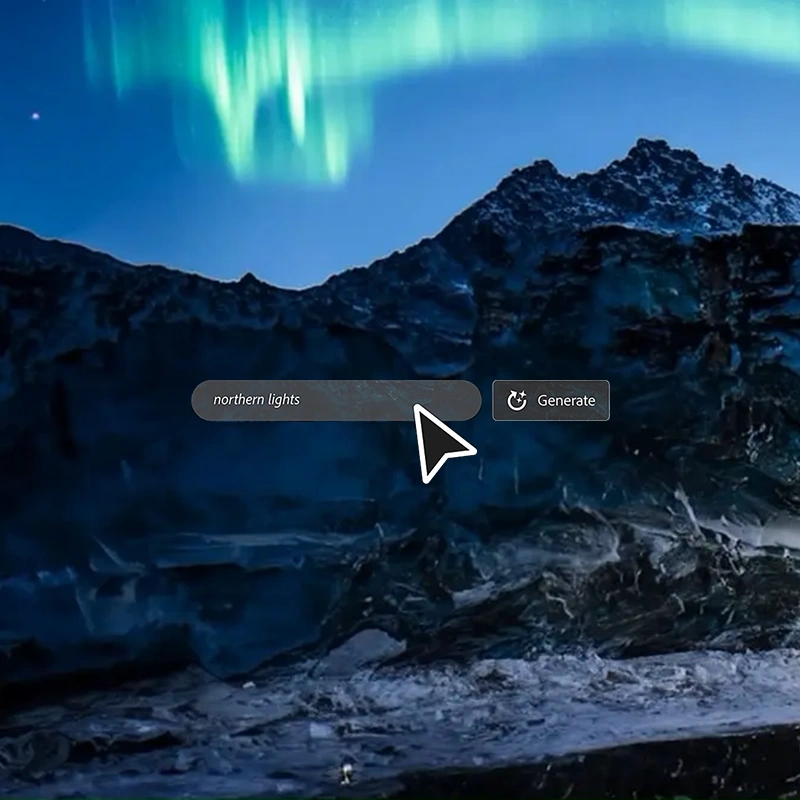
Generative AI is the hype, and as it continues to astonish the public, the technology is certainly here to stay.
Adobe is a software company, and Photoshop has long been the company's most popular digital editing platform, allowing users to do anything from simple photo-editing to high-performance graphic design. The software is also the most widely-used tool when dealing with raster graphics editing.
The software ubiquitous fame has even made the public to colloquially use it's name as a verb.
And in the world where AI is slowly taking over many parts of software computing processes, Adobe is not far behind.
But this time, it's propelling way ahead by incorporating generative AI to supercharge Photoshop's editing capabilities.
Get to know Generative Fill, your new companion for inpainting, outpainting, and pushing the bounds of your creativity. See what you can do with the @Photoshop (beta) app and on the #AdobeFirefly site. https://t.co/9AuYivfduj pic.twitter.com/g8xz3gRy8R
— Adobe (@Adobe) May 23, 2023
In the past, a number of AI image generators have been developed and introduced to the public. The idea is that, users can use text prompts to generate images out of thin air.
Adobe Photoshop's version of AI generator, is called the 'Generative Fill', and it does more than just generating images.
While it does allow users to photorealistically render just about any imagery they ask of it, as long as it's within policy, the tool works inside Photoshop, meaning that Adobe is essentially putting generative AI into one of the world's most popular software, with the ability to reach millions of users, and billions upon billions of viewers.
Unlike diffusion models like DALL·E 2, Imagen, Stable Diffusion, and Midjourney, Photoshop has been around for more than just a few decades.
In that long time frame, it has been aiding professional photographers, graphic designers and other visual artists all over the world to create and edit most imagery there is on the internet, in print, on billboards, bus stops, posters, product packaging and anything else the light touches.
The good thing about bringing generative AI to Photoshop is that, Adobe is making it possible for even the least-capable user to be able to edit with astonishing results.
The bad thing however, it makes results lose many of the usual human touches.
Dream bigger with us. Introducing Generative Fill in the @Photoshop (beta) app - a new magical way to create extraordinary imagery from a simple text prompt, powered by #AdobeFirefly. Learn more: https://t.co/9AuYivfduj pic.twitter.com/tq21V4Szpe
— Adobe (@Adobe) May 23, 2023
This is because Adobe is making image extremely easy, if not too easy.
Generative Fill, which is initially introduced through the beta version of Photoshop, made possible through its Firefly integration, shows how the emergence of AI photography, powered by generative AI, is able to create a profound impact to the world of photography.
In the past, many people considered smartphones threat to photography, because with them, anyone can quickly capture any instances in life, without having to have expensive equipment and image editing knowledge and experience.
But AI here isn't anything like that.
This is because AI photography isn’t actually photography at all. Images created by AI, is just a computer's simulation of photography.
By putting generative AI into Photoshop, enabling users to seamlessy add AI-generated elements to real photos as editable layers, Adobe has opened the door that blurs reality and what's not.
By having Photoshop with generative AI, Adobe is creating an era where people can no longer trust anything they see.
Read: Adobe Enters The Generative AI Race With Image Generator It Calls 'Firefly'
Unlike other generative AIs and AI-powered image generators, what’s novel about Photoshop’s new capabilities is that it allow for the easy merger of reality and digital artifice and they bring it to a much, much larger user base.
The software allows anyone, even without any expertise, to subtly alter pictures, sometimes appearing so real that it seems likely to erase most of the remaining barriers between the authentic and the fake.
All they need, is a computer and a mouse, an imagination and a subscription,
The good news is that, Adobe knows about the dangers, and has been working on a plan to address the widespread dissemination of digitally manipulated images.
One of which, is by using a “nutrition label” that can be embedded in image files to document how a picture was altered, including if it has elements generated by an artificial intelligence.
Adobe's plan, called the Content Authenticity Initiative, is meant to bolster the credibility of digital media.
While it won’t alert users to every image that’s fake but instead, it can help users prove that a certain image is true.
Initially, Generative Fill may create results that aren't too great, and is bad at generating people's faces. But with time, thanks to AI, it will get better for sure.